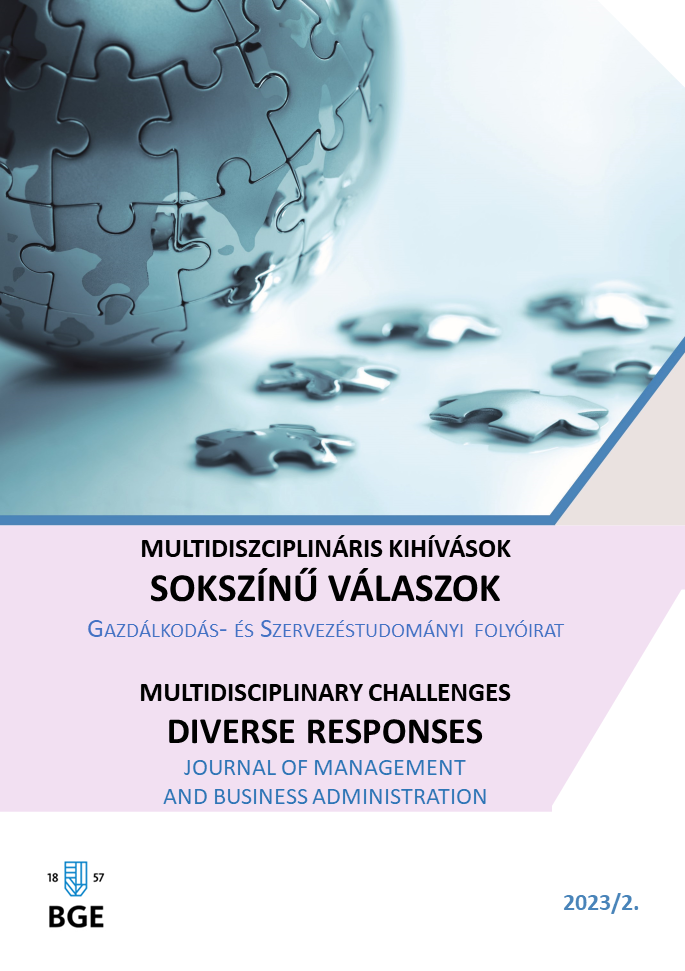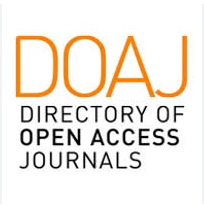Az ágazati és vállalati értékteremtők azonosítása és alkalmazása
Az üzleti tevékenységek és a fenntartható gyakorlatok összehangolása a tulajdonosi értékalkotásban
Absztrakt
Napjainkban a vállalkozások változékony és összetett versenykörnyezetben léteznek. A teljesítmény- és tulajdonosi érték különböző szempontjainak mérése is összetett és alapos körültekintést igényel. Számos üzleti intelligens eszköz létezik, amelyek közül az egyik a strukturált numerikus elemzés. A pénzügyi benchmark is ide tartozik, amelynek jelentősége felértékelődik a piacok bővülésének, de a piacokról való kivonulás idején is. Jelenleg többarányos módszert alkalmaznak és alig terjedt el ezek összekapcsolása a tulajdonosi érték-teremtéssel. A cél annak az EU-s irányelv megvalósításának vizsgálata, mely szerint a vállalatok rövid távú előnyök helyett hosszú távú, fenntartható értékeket teremthessenek. Bemutatjuk a pénzügyi benchmarkban a több információ- tartalmat nyújtó eszközök alkalmazását. Kutatási kérdéseink: Miért és hogyan épülhet egymásra a vállalati fenntartható gazdálkodás, a növekedés és az értékteremtés a gyakorlatban? Milyen kvantitatív és kvalitatív értékteremtőket lehet azonosítani az elmúlt évekből? Hol, és hogyan lehet alkalmazni a kapott eredményeket? Ezek a döntéshozó vezetők munkájának akár újra tervezését is szolgálják. Adatbázis- és eset elemzést végzünk a FINel pénzügyi szakértői rendszer elemző moduljával, amit kiegészítünk tartalomelemzéssel, valamint céges terep- és tanácsadói munka eredményeivel. A pénzügyi benchmarkot a magyar vármegyei top 1000 vállalatok ágazati mintája és AKI minta jelenti. Mindkét minta mérleg és eredménykimutatások aggregált adatait tartalmazza. Amíg a benchmarkok, mint referenciaértékek teljesítése vagy túllépése fontos sikert hozó jelzés, addig az alul teljesítés korai figyelmeztető jelzés, ami akár az adott cég értékrombolásához is vezethet.
Hivatkozások
Abel, A. B., 1983. Optimal Investment Under Uncertainty. American Economic Review, 73(1), 228-233.
Akalu, M. M., 2002. Measuring and Ranking Value Drivers. Tinbergen Institute Discussion Paper, 3. http://dx.doi.org/10.2139/ssrn.310999
Balachandran, B., Nagarajan, N. & Rappaport, A., 1986. Threshold Margins for Creating Economic Value. Financial Management, 15(4), 68-77.
Banerji, S. & Fang, D., 2021. Money as a Weapon: Financing a Winner-Take-All Competition. Journal of Corporate Finance, 66(C). https://doi.org/10.1016/j.jcorpfin.2020.101783
Baños-Caballero, S., García-Teruel, P. J. & Martínez-Solano, P., 2014. Working Capital Management, Corporate Performance, and Financial Nonstraints. Journal of Business Research, 67(3), 332-338. https://doi.org/10.1016/j.jbusres.2013.01.016
Bendell, T., Bouller, L. & Goodstadt, P. 1998. Benchmarking for Competitive Advantage. London: Pitman Publishing.
Bierly, P. & Chakrabarti, A., 1996. Generic Knowledge Strategies in the US Pharmaceutical Industry. Strategic Management Journal, 17(S2), 123-135. https://doi.org/10.1002/smj.4250171111
Biloslavo, R., Bagnoli, C. & Edgar, D., 2018. An Eco-critical Perspective on Business Models: The Value Triangle as an Approach to Closing the Ssustainability Gap. Journal of Cleaner Production. 174(10), 746-762. https://doi.org/10.1016/j.jclepro.2017.10.281
Black, A., Wright, P. & Davies, J., 2001. In Search of Shareholder Value. Managing the Drivers of Performance. London: Financial Times Prentice Hall.
Carroll, A. B., 2004. Managing Ethically With Global Stakeholders: A Present and Future Challenge. The Academy of Management Executive, 18(2), 114-120. https://doi.org/10.5465/AME.2004.13836269
Chan, K. C., Hung-Gay F. & Shen, C., 2019. Special Issue: Effects of Government, Changing Technology and Social Network in Greater China Markets: From Shadow Banking to Corporate Finance: An Introduction. International Review of Economics & Finance, 63(9), 1-3. https://doi.org/10.1016/j.iref.2019.08.002
Copeland, T., Koller, T. & Murrin, J., 1999. Valuation: Measuring and Managing the Value of Companies (2nd ed.). New Jersey: McKinsey & Company, Inc.
Delen, D., Kuzey, C. & Uyar, A. 2013. Measuring Firm Performance Using Financial Ratios: A Decision Tree Aapproach. Expert Systems with Applications, 40(10), 3970-3983. https://doi.org/10.1016/j.eswa.2013.01.012
Elkington, J., 1998. Cannibals with Forks: The Triple Bottom Line of 21st-century Business. Gabriola Island: New Society Publishers.
Freeman, R. E., 1984. Strategic Management: A Stakeholder Approach. Boston: Pitman.
Friedman, M., 1970. The Social Responsibility of Business. The New York Times Magazine, September 13th. https://www.nytimes.com/1970/09/13/archives/a-friedman-doctrine-the-social-responsibility-of-business-is-to.html (2023.03.28.)
Gabzdylova, B., Raffensperger, J. F. & Castka, P., 2009. Sustainability in the New Zealand Wine Industry: Drivers, Sstakeholders and Practices. Journal of Cleaner Production, 17(11), 992-998. https://doi.org/10.1016/j.jclepro.2009.02.015
Hansen, G. S. & Wernerfelt, B. 1989. Determinants of Firm Performance: The Relative Importance of Economic and Oorganizational Factors. Strategic Management Journal, 10(5), 399-411. https://doi.org/10.1002/smj.4250100502
Harrison, J. S. & Wicks, A. C., 2013. Stakeholder Theory, Value, and Firm Performance. Business Ethics Qquarterly, 23(01), 97-124. https://doi.org/10.5840/beq20132314
Huerga, A. & Rodríguez-Monroy, C., 2019. Mandatory Convertible Notes as a Sustainable Corporate Finance Instrument. Sustainability, 11(3), 897. https://doi.org/10.3390/su11030897
Ittner, C. D. & Larcker, D. F. 2001. Assessing Empirical Research in Managerial Accounting: a Value-based Management Perspective. Journal of Accounting and Economics. 32(1-3), 349-410. https://doi.org/10.1016/S0165-4101(01)00026-X
Johnsen, D. B., 2003. Socially Responsible Investing: A Critical Appraisal. Journal of Business Ethics, 43(3), 219-222. https://doi.org/10.1023/A:1022998232503
Kaplan, R. S. & Norton, D. P., 1996. Using the Balanced Scorecard as a Strategic Management System. Harvard Business Review, OnPoint, 36-48.
Katits, E., 2021. Fordulatkezelés a győr-moson-sopron megyei KKV mintában, avagy a turnaround pénzügyek aktualitása. In: Farkas Szilveszter (szerk.) Vállalkozások, kockázatok. Összegyűjtött dolgozatok. Győr: PMS 2000 Mérnöki Társaság.
Katits, E., 2017. Haladó vállalati (életciklus) pénzügyek – Pénzügyek változ(tat)ások idején. Sopron: Soproni Egyetemi Kiadó.
Katits, E., Szalka, É., Nagy F. & Könczöl, T. 2019. A magyar top cégek a turizmusban, avagy egy sikerre éhes ágazat pénzügyi diagnózisa. Budapest: Multidiszciplináris kihívások, sokszínű válaszok, 71-97. https://doi.org/10.33565/MKSV.2019.02.04
Koller, T., Goedhart., M. & Wessels, D., 2010. Valuation: Measuring and Managing the Value of Companies. New Jersey: John Wiley & Sons, Inc.
Kucséber, L. Z., 2016. A hazai felvásárlás előtt és után: fókuszban a forgótőke-menedzselés. Hitelintézeti Szemle, 15(1), 70-90. http://epa.oszk.hu/02700/02722/00076/pdf/EPA02722_hitelintezeti_szemle_2016_1_070-090.pdf
Kucséber, L. Z. 2015. Hogyan befolyásolják a vállalatfelvásárlások a felvásárló cégek jövedelemtermelő képességét? Tér – Gazdaság – Emeber, 3(3), 55-67. http://kgk.sze.hu/images/dokumentumok/folyoirat/TGE_III_evf03.pdf
Mallinson, M. & French, N., 2000. The Nature and Relevance of Uncertainty and How it Might be Measured and Reported. Journal of Property Investment & Finance, 18(1), 13-32. https://doi.org/10.1108/14635780010316636
Merello, P., Barberá, A. & De la Poza, E., 2022. Is the Sustainability Profile of FinTech Companies a Key Driver of Their Value? Technological Forecasting and Social Change. 174, 121290. https://doi.org/10.1016/j.techfore.2021.121290
Mills, R. & Print, C., 1995. Strategic Value Analysis. Management Accounting, 73(2). 35-37.
Nemzeti Fenntartható Fejlődési Tanács (2013): Nemzeti fenntartható fejlődési keretstratégia. https://eionet.kormany.hu/akadalymentes/download/1/26/71000/NFFT-HUN-web.pdf
Peylo, B. T., 2012. A Synthesis of Modern Portfolio Theoryand Sustainable Investment. The Journal of Investing, 21(4), 33-46. https://doi.org/10.3905/joi.2012.21.4.033
Portillo-Tarragona, P., Scarpellini, S., Moneva, J. M., Valero-Gil, J., & Aranda-Usón, A., 2018. Classification and Measurement of the Firms’ Resources and Capabilities Applied to Eco-Innovation Projects from a Resource-Based View Perspective. Sustainability, 10(9), 23. https://doi.org/10.3390/su10093161
Rahman, M. S., Bag, S., Gupta, S. & Sivarajah, U., 2023. Technology Readiness of B2B Firms and AI-based Customer Relationship Management Capability for Enhancing Social Sustainability Performance. Journal of Business Research. Elsevier 156 (C). https://doi.org/10.1016/j.jbusres.2022.113525
Rappaport, A., 1998. Creating Shareholder Value. New York: Simon és Schuster
Rappaport, A., 2002. A tulajdonosi érték. Budapest: Alinea Kiadó
Rothaermel, F., 2017. Strategic Management. New York: McGraw Hill Education
Saeidi, S. P., Sofian, S., Saeidi, P., Saeidi, S. P. & Saaeidi, S. A., 2015. How Does Corporate Social Responsibility Ccontribute to Firm Financial Performance? The Mediating Role of Competitive Advantage,Reputation, and Customer Satisfaction. Journal of Business Research, 68(2), 341-350. https://doi.org/10.1016/j.jbusres.2014.06.024
Scarlett, R.C., 1997. Value-Based Management. London: CIMA Publishing.
Sewpersadh, N. S., 2023. Disruptive Business Value Models in the Digital Era. Journal of Innovation and Entrepreneurship. 12(1), 1-27. https://doi.org/10.1186/s13731-022-00252-1
Schlossberger, E., 1994. A New Model of Business: Dual-investor Theory. Business Ethics Quarterly, 4(04), 459-474. https://doi.org/10.2307/3857344
Schor, L., 2000. Topics in Value Based Management. Boston: The LEK/Alcar Consulting Group LLC.
Sertsios, G., 2020. Corporate Finance, Industrial Organization, and Organizational Economics. Journal of Corporate Finance, 64 (C), https://doi.org/10.1016/j.jcorpfin.2020.101680
Siegrist, M., Bowman, G., Mervine, E. & Southam, C., 2020. Embedding Environment and Sustainability into Corporate Financial Decision-Making. Accounting & Finance, 60(1), 129-147. https://doi.org/10.1111/acfi.12533
Soppe, A., 2004. Sustainable Corporate Finance. Journal of Business Ethics, 53(1-2), 213-224. https://doi.org/10.1023/B:BUSI.0000039410.18373.12
Tantalo, C. & Priem, R. L., 2016. Value Creation Through Stakeholder Synergy. Strategic Management Journal, 37(2), 314-329. https://doi.org/10.1002/smj.2337
Todeschini, B. V., Cortimiglia, M. N., Callegaro-de-Menezes, D. & Ghezzi A., 2017. Innovative and Sustainable Business Models in the Fashion Industry: Entrepreneurial Drivers, Opportunities, and Challenges. Business Horizons, 60(6), 759-770. https://doi.org/10.1016/j.bushor.2017.07.003
Turner, R. J., 1998. Projects for Shafreholder Value: the Influence of Project Managers. https://www.researchgate.net/profile/J-Turner/publication/238078970_PROJECTS_FOR_SHAREHOLDER_VALUE_THE_INFLUENCE_OF_PROJECT_MANAGERS/links/0f31752d6d9552043f000000/PROJECTS-FOR-SHAREHOLDER-VALUE-THE-INFLUENCE-OF-PROJECT-MANAGERS.pdf (2023.04.28.)
Vítková, E. & Chovancová, J. & Veselý D., 2017. Value Driver and Its Impact on Operational Profit in Construction Company. Procedia Computer Science, 121, 364-369. https://doi.org/10.1016/j.procs.2017.11.049
Vochozka, M. & Machová, V., 2018. Determination of Value Drivers for Transport Companies in the Czech Republic. Nase More, 65(4), 197-201.
http://dx.doi.org/10.17818/NM/2018/4SI.6
Widelmann, H., 2008. Entwicklungstrend in der Automobil- und Zulieferindustrie: empirische Studie. München: TCW, Transfer-Centrum Verlag.


























